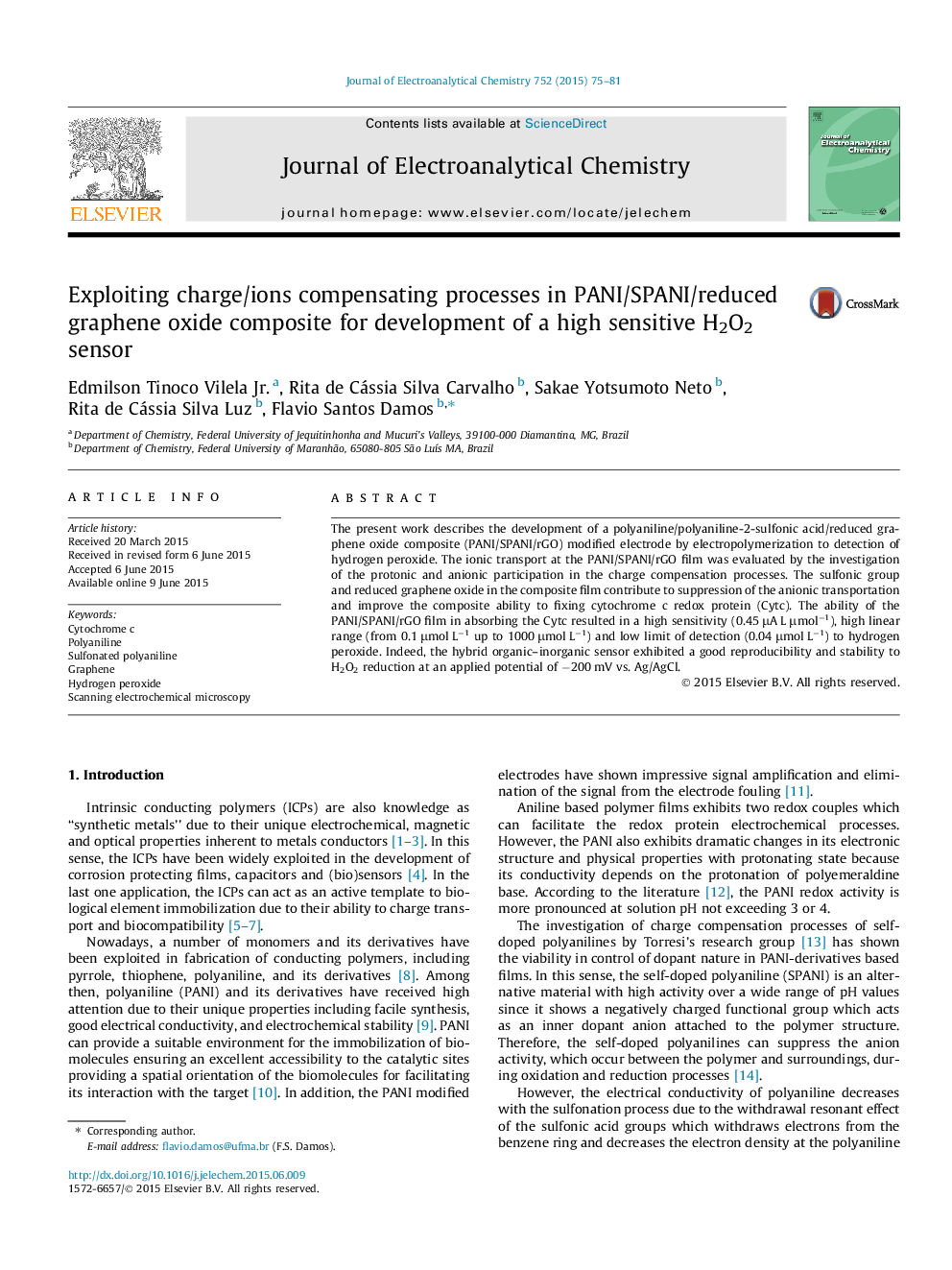| کد مقاله | کد نشریه | سال انتشار | مقاله انگلیسی | نسخه تمام متن |
|---|---|---|---|---|
| 218146 | 463185 | 2015 | 7 صفحه PDF | دانلود رایگان |

• A new PANI/SPANI/graphene composite with high immobilizing ability of cytochrome c.
• Development of an excellent environment to Cytc immobilization retaining high activity to H2O2.
• The organic–inorganic composite exhibits high performance and good stability for H2O2 reduction.
The present work describes the development of a polyaniline/polyaniline-2-sulfonic acid/reduced graphene oxide composite (PANI/SPANI/rGO) modified electrode by electropolymerization to detection of hydrogen peroxide. The ionic transport at the PANI/SPANI/rGO film was evaluated by the investigation of the protonic and anionic participation in the charge compensation processes. The sulfonic group and reduced graphene oxide in the composite film contribute to suppression of the anionic transportation and improve the composite ability to fixing cytochrome c redox protein (Cytc). The ability of the PANI/SPANI/rGO film in absorbing the Cytc resulted in a high sensitivity (0.45 μA L μmol−1), high linear range (from 0.1 μmol L−1 up to 1000 μmol L−1) and low limit of detection (0.04 μmol L−1) to hydrogen peroxide. Indeed, the hybrid organic–inorganic sensor exhibited a good reproducibility and stability to H2O2 reduction at an applied potential of −200 mV vs. Ag/AgCl.
Figure optionsDownload as PowerPoint slide
Journal: Journal of Electroanalytical Chemistry - Volume 752, 1 September 2015, Pages 75–81